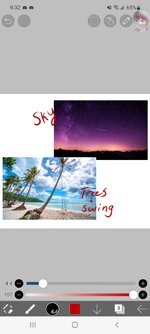Hi friends! I've been using Procreate/Photoshop for iPad for ~10 months to draw, and I had very little experience drawing traditionally before that. There are so many aspects of digital (and traditional) art I haven't attempted, and others I'd like to improve (like drawing semi-realistic characters, landscapes and backgrounds, shading/lighting, and lineless drawing styles). I've taken a Domestika course on drawing characters in front, profile, and 3/4 views, which I enjoyed, but because I don't have a particular style, I still feel a little stuck, and don't know where to look next, to continue learning.
In an effort to find some new resources and make some progress, I'm looking for all your advice, areas you think are good to focus on, course and tutorial recommendations, Procreate brush recommendations, and whatever else you can think of! I've put some questions down below, but please impart any and/or all of your knowledge to me!
Sorry for the long post. Thank you for your wisdom.
In an effort to find some new resources and make some progress, I'm looking for all your advice, areas you think are good to focus on, course and tutorial recommendations, Procreate brush recommendations, and whatever else you can think of! I've put some questions down below, but please impart any and/or all of your knowledge to me!
- I'm genuinely interested to know, how did you get where you are? How did you learn to draw or paint the way you do?
- Do you have recommendations for resources, tutorials, courses, etc. to help improve semi-realistic or non-chibi character drawing?
- Any advice or resources on learning to draw landscapes and backgrounds?
- How do you find your Procreate brushes, and more importantly, how do you choose which brush you're going to use?! (I find myself afraid to try textured brushes for lining my drawings. I see you all using crayon brushes, watercolour brushes, and paint-like/gradient brushes, but I look at them and feel out of my depth!)
Sorry for the long post. Thank you for your wisdom.



